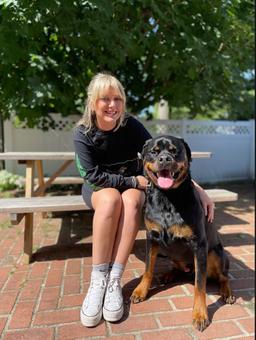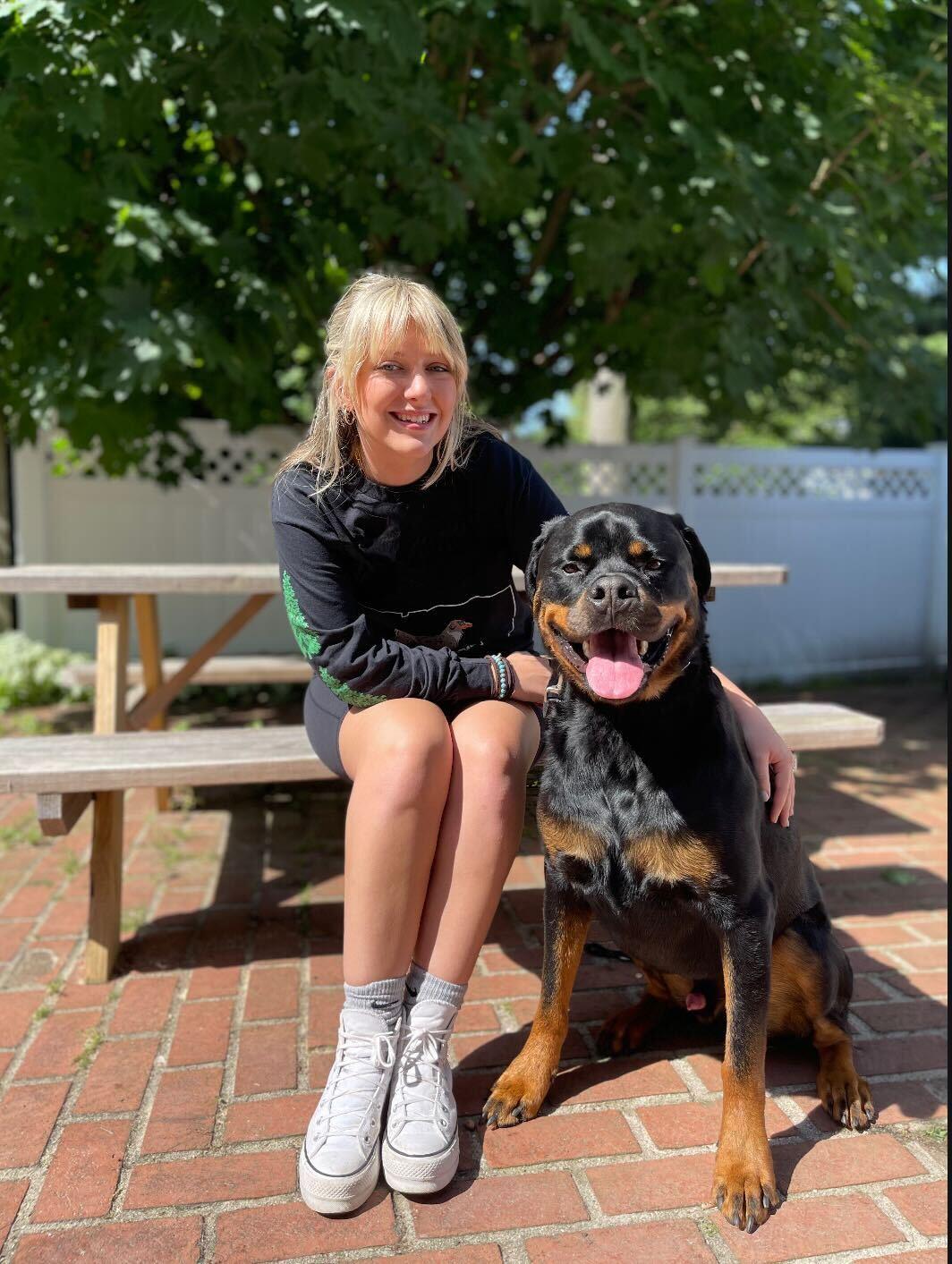Looks like you’ve just got the ultimate side-eye from your dog. No, your furry friend isn’t channeling their inner diva or judging your questionable life choices (maybe just a little). They are not trying to create a meme-worthy moment as well. The notorious "whale eye is a sign that your dog is feeling stressed, uncomfortable, or afraid.
A dog’s eye, just like a human’s eye, consists of three major parts – the pupil, the sclera and the iris. The whale eye has more to do with the sclera, the white connective tissue in the eyes. We humans have a larger sclera when compared to dogs. This is because we rely a lot on the eyes for non-verbal communication. For dogs though, it is just a thin ring (notice the next time you see your dog). (2)
Some researchers feel that dogs learnt the whale eye expression by looking at how humans used their eyes for communication. This expression in them comes naturally now in situations when they want to either look away or keep an eye on what’s coming. Direct eye contact means confrontation in the dog world. (2)
What Does It Mean When a Dog Gives Whale Eyes?
You’ll usually see the whale eye expression in times of fear, discomfort or uneasiness in your dog. For example, when you try to hug or cuddle with them and all they want is personal space at that moment or when you’re taking that last bite of a sandwich, and your dog is giving you the eye indicating a plan to snatch it.
One of the most common situations for a dog to give a whale eye is waiting at the vet clinic and then the name being called out. It’s like their way of saying “I know what’s coming, and I’m not happy about it!”
It is possible for you to not understand or get the cue from your dog’s whale eye. A dog’s body language in those situations can also give you an idea of what your dog must be feeling. Some signs that you should be looking for include – (1)
Stiffened tail held low
Rigid posture
Excessive lip licking
Heavy panting
Rolling on the back
Raised hackles (the hairs that line their backbone)
As a caring owner, it is important for you to handle the situation for them at those times. Identify the trigger and try to remove the discomfort for them. Do not yell or punish them. Comfort them and speak softly to them at such times.
Can Puppies Give Whale Eye?
We’ve read stories of people saying that their 4-month-old puppies have also been giving a whale eye in certain situations. So, yes, puppies can give a whale eye. It’s a natural element of a dog’s body language irrespective of age.
Puppies usually encounter new experiences where they don’t know what to do. These include grooming, being handled, meeting new people and animals, training sessions, loud noises, etc. All these situations can trigger the feeling of fear and anxiety in them and hence a whale eye.
Dog Whale Eye While Playing Meaning
Dogs, especially in their puppy stage, get too excited while playing. Their owners too may get over-excited at times and keep playing without considering the dog’s capacity. Another puppy in the park may also get rambunctious at times. At such times, your dog giving the whale eye can simply mean “Hey, I need a breather here!”
Whale eyes are also common in dogs when they are really trying to focus on something while playing.
What you need to understand is, that showing a whale eye is not necessarily a cause of concern every time. The context is what matters here. There may be a case where your dog may be showing a whale eye but without any other signs of discomfort. Or your dog may have gotten on their backs just for a belly rub.
What Can a Dog’s Eyes Tell You About Their Health?
Dog’s eyes are not just a window to their soul but also to their overall health. Here are some signs that indicate that something is wrong with them – (3)
Excessive squinting
Transparent, yellow, green or brown discharge
Redness in the eyes
Cloudiness
Constant face rubbing or pawing on the eye
There are a range of eye conditions that your dog can be affected with during their lifetime. These include –
Bacterial or viral conjunctivitis
Dry eyes
Corneal ulcers
Nuclear sclerosis
Cataracts, etc.
If you see any of the above signs, you should immediately take your dog to the vet. Eye problems are not something you can treat at home. If ignored, your dog could even lose vision.
More About Spot Pet Insurance
The above-mentioned eye conditions can turn out to be severe at times. The cost of treatment can put a big dent in your savings at times. With pet health insurance you can save up to 90% of those costs. With Spot Pet, you can save many more costs.
Spot accident and illness plans can be used with any licensed vet in Canada or the U.S. Whether you are home, or traveling to the U.S., veterinary services your pet receives for the diagnosis, treatment, or management of covered conditions can be eligible for reimbursement. Spot’s accident and illness plans can help cover a variety of conditions including broken bones, lacerations, aggression, kidney disease, diabetes, and more. With the addition of Wellness Riders for an extra cost, you can also receive reimbursements for wellness exams, certain vaccinations, dental cleanings, and more.
Learn more about dog insurance or get a free quote!

I’m Charlie: canine enthusiast with a knack for figuring out why my dog, Dallas, is more infatuated with tennis balls than me. My lifelong passion for dogs has created a dedication to help other pet parents better understands their furry family members!
Chessher, C. (2024, July 25). Dog whale eyes: Canine body language explained. Dogster. https://www.dogster.com/dog-health-care/dog-whale-eyes
DipCbst, A. F. C. (2023, May 12). Whale eye in Dogs: Why dogs show the white of their eyes.












